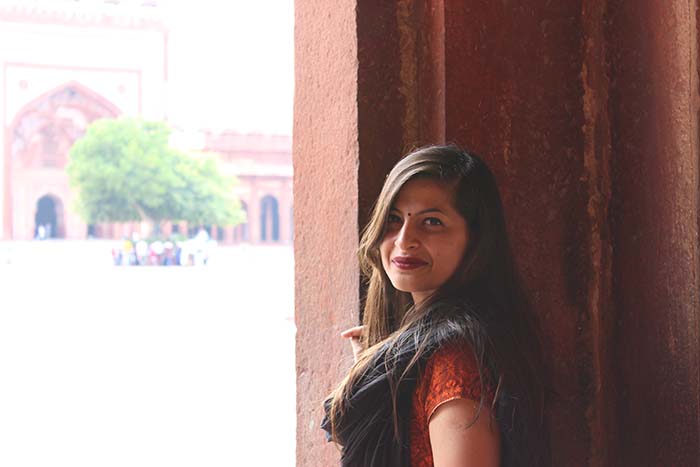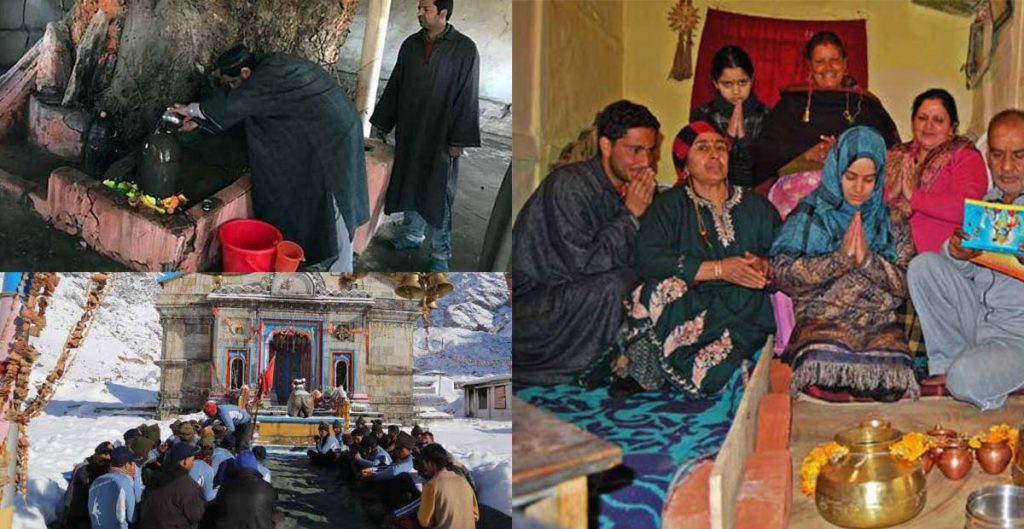Blog, Kashmiri Culture
The Complete Guide To Mahashivaratri – The Biggest Festival of Kashmiri Pandits
Mahashivaratri, locally known as ‘Shivaratri’, or ‘Herath’ in Kashmiri, is undoubtedly the biggest festival of the Kashmiri Pandits. The large-scale celebrations on this day are more elaborate than on Holi, Diwali in our community.
It falls in the month of February or early March and is celebrated with great zeal and fervor. Interestingly, Kashmiri Brahmins celebrate it on the 13th day of the Hindu month – a day before it is observed elsewhere in the world.
In the literal sense, ‘Shivaratri’ means, ‘Shiva’s night’. It marks the night of Lord Shiva’s wedding to Goddess Parvati.
Ask any Kashmiri Pandit and they will tell you, this is as grand as it gets – and here’s why…
Preparations for the special occasion get underway 21 days before the actual day and bear a striking semblance to the festival of Diwali.
This includes, dusting the house, washing and cleaning the kitchen, bringing out ‘herath-special’ utensils, purchasing puja items and also buying new clothes. (Fun fact: Sometimes the refrigerator is wiped clean too!)
On this day, it is customary for all members of the house to observe a fast.
Since grand celebrations are not commonplace in our community, this age-old tradition naturally brings together all members of the family. For the elders it is a day of prayer, meditation and devotion to Lord Shiva. The kids find joy in frolicking around wearing new clothes.
In the olden days, all family members would also indulge in a game played with sea shells (cowries). It is called as ‘haara baaz’ in Kashmiri.
Here we have split the Shivaratri rituals in three parts for easy understanding of our readers.
1.Vatuk Puja
2.Shivaratri Feast
3.Herath Kharch
Read on to find out what each of them consists of.
Vatuk Puja
The Shivaratri puja is popularly known as ‘Vatuk Puja’.
The name can be traced to the term ‘Vatuk Dev’, or Lord Shiva’s celibate form.
Before the start of the puja, two large vessels representing Lord Shiva and Goddess Parvati are embellished with flower garlands, and filled with walnuts to the top. A red thread is also tied around the mouths of these utensils. A symbol of ‘Om’ is also drawn on them.
Along with this, several small pots representing other deities are covered with a super-fine sheet of silver (varak), to give them a festive look.
The worship begins with invocation of Lord Ganesha, along with purifying vessels of other deities. During the puja, a red thread (kalawa) is tied around the wrists of every member of the family. The ritual concludes with blowing conches, as the entire family joins in for an aarti.
Shivaratri (Herath) feast
The dinner is definitely the highlight on this particular day, which serves as the second best opportunity (after Kashmiri weddings) to enjoy delectable Kashmiri dishes.
In most households, multiple vegetarian dishes are prepared as part of a grand dinner spread. However, in some houses, the lavish dinner comprises of typical non-vegetarian delicacies such as ‘rogan josh’ and ‘matczha’ or meat balls as well.
Shivaratri rituals last for three to four days.
On the 15th day, Dunya Mavas (walnut amavas) is observed. The day is marked by performing puja near the banks of a river, where emptied vessels are brought for immersion. The soaked walnuts are taken back home and distributed in the family as Prasad.
The main prasad consists of walnuts and tumul czhut(rice chapati). The process of prasad distribution continues for another week. The celebrations come to a close on the 8th day of the bright half of Phalguna.
The women of the house, as a custom, visit their parents’ house and return with money to their in-laws.
Herath Kharch
It is another much-awaited and fun-loving custom of Herath.
Just a day after the puja, the head of the family offers money to children, younger ones in the family.
The excitement around this traditional practice is immense, where children sometimes wake up early to wish everyone ‘Herath mubarak’, and ask them for their ‘Shivaratri earning’. In the good old days, this money was used to buy new clothes and candies from the market.
The newlyweds are also gifted cash by the elderly.
Note by Bhawana Zutshi – The word herath is derived from the Arabic word hairat. And here is the real story: We all know Kashmir was ruled by muslim rules for centuries. One of the ruler called Jabbar ordered Kashmir Hindus to perform Shivratri puja in summers. KPs had no other choice so they decided to celebrate Shivratri in the month of Aashad instead of the one that comes in Phulgun. On that night of Aashad it snowed heavily in Srinagar, which was nothing less than wonder. Hence, the word herath (hairat). The saying goes like, “Jabbar jandh raitkalis karun wandh”.
About the writer Rupal Raina

I am Rupal and am a Kashmiri Pandit girl living in Delhi. I love to write and meet new people. Writing is a way to give my thoughts an expression, that engages with people. I am a lover of all things art, technology, and most essentially unique ideas. I am also a yoga enthusiast. You’ll always find me on my yoga mat, trying to make up for a bad day ( when I have one)!




